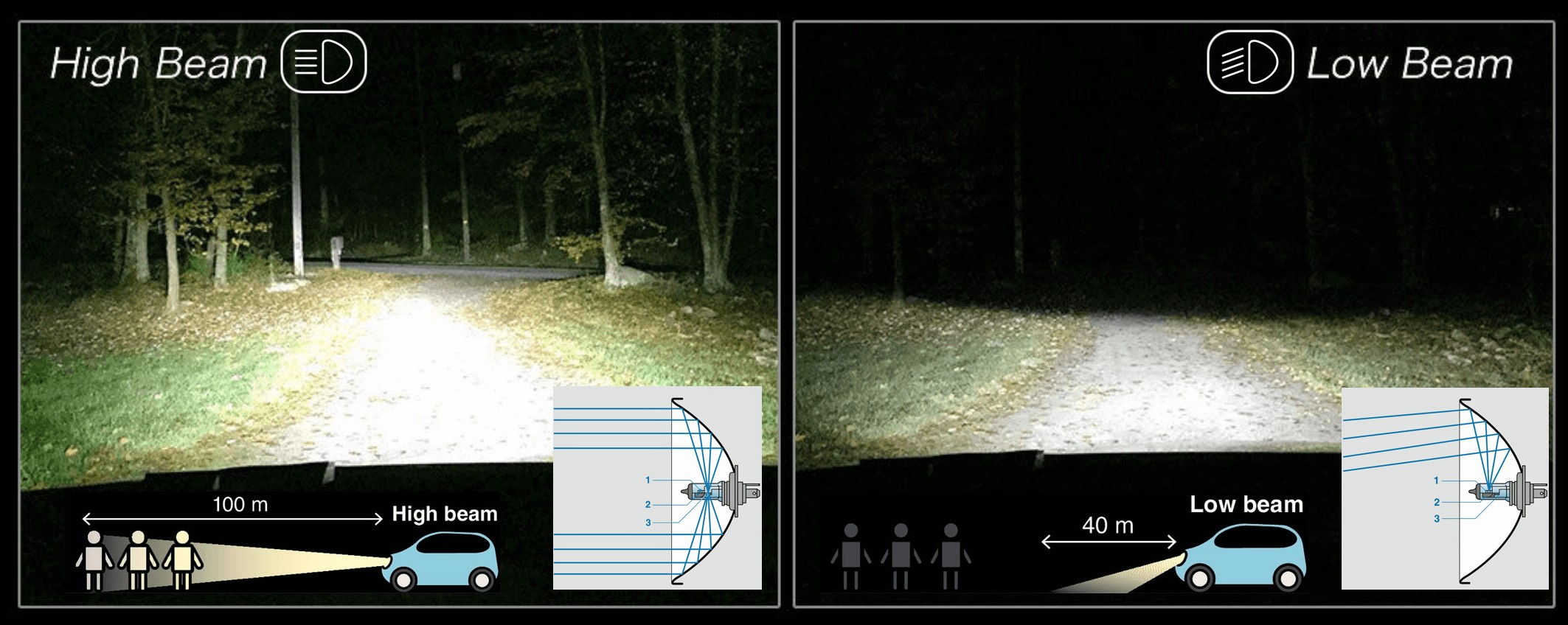All road vehicles, from cars and motorcycles to semi-trucks, utilize two essential headlight functions: high beam and low beam. Understanding the difference between these two settings is crucial for safe and effective driving. This article will illuminate the distinctions between high beams and low beams, explaining how they work and when to use them appropriately.
 Low Beam vs High Beam Headlight Function
Low Beam vs High Beam Headlight Function
High Beam vs. Low Beam: Key Differences
The core difference between high beam and low beam headlights lies in their intended use. Low beams are for regular nighttime driving, providing illumination for the road directly ahead. High beams, on the other hand, are reserved for poorly lit or unlit roads where increased visibility is necessary. They project light further down the road but can blind oncoming drivers if used improperly.
Low beams are angled downwards, illuminating the road surface without glaring into the eyes of other drivers. They should always be on during nighttime driving or in low-visibility conditions like tunnels. High beams project light straight ahead and upwards, significantly increasing visibility range but creating a much stronger glare.
Comparing High Beam and Low Beam Headlights
| Feature | High Beam | Low Beam |
|---|---|---|
| Beam Angle | Straight/Upwards | Towards the ground/road |
| Focus | Long-range | Short-range |
| Light Coverage | ~100 meters (330 ft) | ~40 meters (130 ft) |
| Best For | Dark rural areas, small roads | Nighttime driving, tunnels |
| When to Use | No oncoming traffic, dark areas | At night, tunnels, dim conditions |
| Glare | High, blinds other drivers | Minimal |
| Activation | Manual | Automatic or Manual |
Decoding Low Beam Headlights
Low beams are the standard setting for your headlights, providing adequate illumination for typical nighttime driving. Their shorter range and downward angle minimize glare for oncoming traffic. They are sometimes referred to as “dipped beams” or “dims.”
When and How to Use Low Beams
Low beams are legally required for nighttime driving and should also be used in dimly lit conditions like tunnels or parking garages. Most modern vehicles have automatic headlight systems that activate low beams when low light is detected. They can also be manually activated using a switch, usually located on the turn signal lever. U.S. and Canadian law mandates two functioning low beam headlights at all times.
Understanding High Beam Headlights
High beams, often called “brights,” dramatically increase visibility range compared to low beams. This increased light output is crucial in completely dark environments where seeing further down the road is essential for safety. A blue indicator light on your dashboard usually signifies that your high beams are activated.
When and How to Use High Beams
High beams should only be used in dark, unlit areas with no oncoming traffic or vehicles directly ahead. Improper use can temporarily blind other drivers, creating a hazardous situation. Activate high beams by pulling or pushing the turn signal lever (the specific action varies by vehicle). Pulling the lever typically provides a momentary flash, while pushing it toggles the high beams on until manually deactivated. Avoid using high beams within 500 feet of oncoming traffic or 200-300 feet of vehicles in front of you.
Single and Dual-Beam Headlight Systems
While all vehicles have high and low beam functions, the systems can differ. Some use two separate bulbs for each function (single-beam system), while others use a single bulb for both (dual-beam system). Dual-beam systems require only one set of replacement bulbs, simplifying maintenance.

